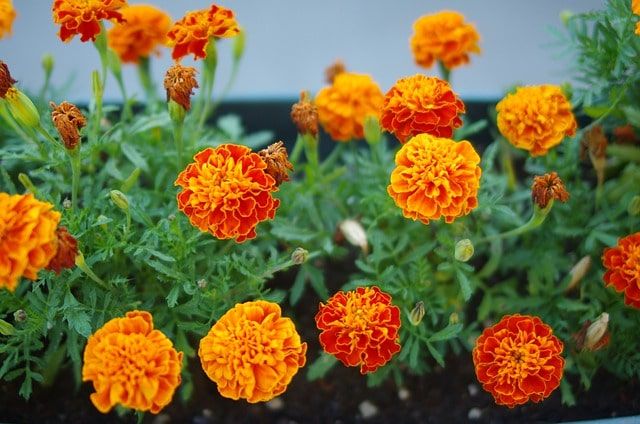Marigold blossom, from the offering to the textile
The cempasúchil ("marigold") flower, also known as the flower of 20 petals, with an intense and mysterious aroma, is commonly identified for its use in the celebration of the Day of the Dead in November, as it is considered a symbol of life and death.

The marigold flower, also known as the flower of 20 petals, with an intense and mysterious aroma, is commonly identified for its use in the celebration of the Day of the Dead in November, as it is considered a symbol of life and death. The marigold flower appears at the same time as the rainy season, between June and October, so on the eve of the celebration, the grounds glow an intense yellow color that unites with the sun's rays.
However, the textile artisans in the Zapotec town of Teotitlán del Valle, about 40 minutes east of Oaxaca City, make the most of it because they use it as a natural dye, to dye wool, and then make garments. In the houses extended as workshops, they dye yarn with natural dyes, using cochineal, indigo, cempasúchil ("marigold"), walnut, and pomegranate shells, tree bark, and leaves, in a natural process, without chemicals.
The yellow color, one of the basic colors in the palette of primary colors, is extracted from the flower of the dead, to get it, the artisan plucks the wilted marigold petals that adorned the offerings, then puts them to boil in water to get an infusion. The flower is recycled. The petals are used to obtain the dye, while the branches and stems are returned to the earth as fertilizer or grown in the backyard.
To obtain a firm dye, the wool and cotton yarns must first be treated or "cured" in boiled water; the soft texture of the wool is achieved after several days of soaking. The cempasúchil infusion is added to the wool yarns in the pot where they were soaked, then they are put to dry, and later, they are placed on the pedal loom to weave: rugs, canvases, blankets, bags, and gabanes ("garments").
Years of experience and ancestral techniques of natural dyeing.
The organization Women United of Teotitlán del Valle takes advantage of November and asks the producers to provide it with fresh flowers. In this way, many families benefit from the work in the traditional Zapotec weaving workshops of Teotitlán de Valle, where they give life to their creations. The colored canvases are present in their garments, in applications to the neck, sleeves, or chest, which brings other combinations with the handmade embroideries.
The green color and its variants are obtained from marigold and indigo, while the oranges and reds are obtained from the fusion with cochineal pomegranate.
The play of colors is achieved from the combination with infusions of Brazil wood, coconut shell, pomegranate, and oak, which make sense in the warp work.
Oaxaca, land of the marigolds
Oaxaca is among the 10 states in the country with the highest production of the marigold flower. The regions of the Central Valleys and Mixteca allocate around 50 hectares of land for the cultivation of both, according to the Secretary of Agricultural Development, Fishing, and Aquaculture of Oaxaca.
According to the agency in charge of agricultural and livestock policy, the municipalities of Oaxaca de Juárez, Zimatlán de Álvarez, San Antonino Castillo Velasco, Tlacolula de Matamoros and Villa de Mitla allocate about 30 hectares of their crop lands for the planting of these flowers, which are then sold in local markets and Central de Abasto, in Oaxaca City.
The Agrifood and Fisheries Information Service (SIAP) reported that Oaxacan producers harvested 320 tons of marigold in 2018; however, it estimated that this year's production was slightly lower, due to the drought recorded in the second half of this year.
According to preliminary information nationwide, six thousand 377 hectares of marigold, velvet, chrysanthemum, and cloud were cultivated for the celebration of the Day of the Dead 2019. The State of Mexico, Puebla, Hidalgo, Guerrero, Michoacán, Tlaxcala, San Luis Potosí, Morelos, Oaxaca, Mexico City and Durango are considered the entities with the highest production of the flower used by Mexicans.




